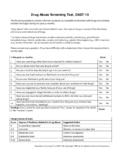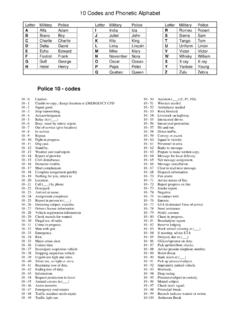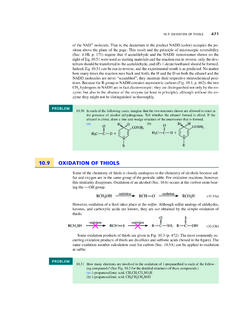Transcription of ICD-10-CM/PCS to ICD-9-CM Reimbursement Mappings
1 ICD-10-CM/PCS to ICD-9-CM Reimbursement Mappings 2011 Version Documentation and User s Guide Preface Purpose and Audience This document accompanies the 2011 update of the Centers for Medicare and Medicaid Studies (CMS) public domain one-to-one applied Reimbursement Mappings of the ICD-10-CM (diagnosis) and ICD-10-PCS (procedure) code systems to the ICD-9-CM Volume 1 (diagnosis) and ICD-9-CM Volume 3 (procedure) code systems respectively. The Reimbursement Mappings can be found on CMS ICD-10 website at The purpose of this document is to give readers the information they need to understand the intent and structure of the Mappings so they can use the information correctly. The intended audience includes but is not limited to professionals working with health services Reimbursement systems. General readers may find section 1 useful.
2 Software engineers and IT professionals interested in the details of the file formats will find this information in Appendix A. Document Overview For readability, when no distinction is necessary between diagnosis codes and procedure codes, ICD-10-CM or ICD-10-PCS is abbreviated ICD-10 , and ICD-9-CM Volumes 1 or 3 is abbreviated ICD-9 . Section 1 is a general interest discussion of mapping between ICD-10 and ICD-9 and the rationale for the development of the Reimbursement Mappings . The meaning of one-to-one in the context of an applied mapping is discussed. Section 2 contains detailed information on how to use the Reimbursement Mappings , for users who will be working directly with mapping between applications. Appendix A describes the technical details of the file formats. One mapping file is provided for diagnosis codes and one for procedures, both in the same format.
3 Appendix B contains the frequency rule set applied to make the mapping choices for the Reimbursement Mappings . Also included are codes whose frequencies are so low that they did not fall within the parameters of any rule in the frequency rule set. In such cases, the coding and clinical members of the team chose the code deemed the closest match. Reimbursement mapping User s Guide 1 2011 Version Section 1 Reimbursement mapping Rationale Converting ICD-10 Data for ICD-9 Systems After the ICD-10 implementation date as specified in the Final Rule, health care claims for services on or after October 1, 2013 will be submitted to payers with diagnoses coded in ICD-10-CM for all provider types, and procedures coded in ICD-10-PCS for hospital inpatient services only. The Reimbursement Mappings were created to provide a temporary but reliable mechanism for mapping records containing ICD-10 diagnosis and procedure codes to Reimbursement equivalent ICD-9 diagnosis and procedure codes, so that while systems are being converted to process ICD-10 claims directly, the claims may be processed by the legacy systems.
4 The ICD-10 diagnosis codes submitted on the claim are mapped via the Diagnosis Reimbursement mapping into ICD-9 diagnosis codes that can then be processed by the ICD-9-based Reimbursement system. Similarly the ICD-10 procedure codes submitted on the claim are mapped via the Procedure Reimbursement mapping into ICD-9 procedure codes that can then be processed by the ICD-9-based Reimbursement system. The claim may then be priced using the rules written for ICD-9 codes. Derivation from General Equivalence Mappings (GEMs) CMS annually publishes updates of the General Equivalence Mappings (GEMs). The GEMs are Mappings between ICD-10-CM and PCS and ICD-9-CM codes. These annual updates can be found on the CMS ICD-10 website at . The reader is advised to see the User s Guides provided with the GEM files. Each contains a general discussion of the challenges inherent in translating between code sets, and the strategies that may be adopted to develop Mappings from the GEMs for specific applications.
5 Those discussions are not repeated here. The GEM User s Guides also provide a comprehensive glossary, which may be of use to readers unfamiliar with the terminology of code set translation. The Reimbursement Mappings were derived from the GEMs using the techniques discussed below. One-to-one and one-to-many Mappings The ICD-10 to ICD-9 General Equivalence Mappings are one-to-many Mappings in two different senses: Alternatives. More than one ICD-9 code may be a valid translation of a given ICD-10 code. Which one of those ICD-9 codes is the most correct translation cannot be determined based on the meaning of the codes themselves. For example, ICD-10 procedure 0LQ70ZZ, Repair Right Hand Tendon, Open Approach, translates to ICD-9 procedure , Suture of tendon sheath, or to procedure , Other suture of tendon.
6 Both are valid translations of the ICD-10 procedure code. Clusters. At times it requires multiple ICD-9 codes combined to reproduce the complete meaning of one ICD-10 code. This is the case with ICD-9 principal procedure codes such as coronary angioplasty that require the use of adjunct Reimbursement mapping User s Guide 2 2011 Version ICD-9 codes to provide additional detail. For example, ICD-10 procedure code 02733ZZ, Dilation of Coronary Artery, Four or More Sites, Percutaneous Approach, requires two ICD-9 codes to be fully represented in ICD-9: , PTCA or coronary atherectomy, and , Procedure on four or more vessels. Reimbursement systems may depend for correct pricing on the additional meaning provided by adjunct ICD-9 codes. A Reimbursement system which pays more for a procedure performed on four or more vessels would pay incorrectly if the 02733ZZ were translated into only.
7 The Reimbursement Mappings are one-to-one Mappings only in the sense that they choose one ICD-9 translation for each ICD-10 code. The translation may be one ICD-9 code or one ICD-9 cluster. For ICD-10 codes that translate to multiple single ICD-9 codes in the GEMs, one ICD-9 code was selected for Reimbursement purposes. For ICD-10 codes that translate to multiple ICD-9 clusters in the GEMs, one ICD-9 cluster was selected for Reimbursement purposes. The mapping of one ICD-10 may require as many as six ICD-9 codes to reproduce the meaning of the ICD-10 code. In such cases, where an ICD-10 code maps to an ICD-9 cluster in the Reimbursement Mappings , the ICD-9 codes comprising the cluster are not to be treated as alternatives. All of them must be included in the translated ICD-9 claim sent to the ICD-9 legacy Reimbursement system in order to reproduce the information in the submitted ICD-10 claim.
8 Frequency data used to derive ICD-9 mapping The Reimbursement Mappings are an applied mapping of the ICD-10 to ICD-9 GEMs. More than 65,000 of the 69,000 ICD-10 diagnosis codes (95%) in the ICD-10 to ICD-9 diagnosis GEM translate to a single ICD-9 code. Similarly, more than 66,000 of the 72,000 ICD-10 procedure codes (93%) in the ICD-10 to ICD-9 procedure GEM translate to a single ICD-9 code. Approximately 3,500 ICD-10 diagnosis codes and 5,000 ICD-10 procedure codes required rules for choosing among ICD-9 code alternatives. Translation Alternatives in ICD-10 to ICD-9 GEMs Code set ICD-10 Codes with only 1 ICD-9 alternative ICD-10 Codes with >1 ICD-9 alternative ICD-10 Codes with no ICD-9 alternative Total ICD-10 codes ICD-10-CM (diagnosis) 65,060 3,675 (5%) 633 69,368 ICD-10-PCS (procedure) 66,835 5,246 (7%) 0 72,081 The rules for choosing among ICD-9 code alternatives operated on frequency data from ICD-9 based records.
9 Selection of a single ICD-9 code for both diagnosis and procedure codes made use of two reference data sources: Medicare Approximately 35 million MedPAR records, from 10/1/2006 to 9/30/2009 Reimbursement mapping User s Guide 3 2011 Version All-payer Approximately 12 million inpatient hospital records available from the California Office of Statewide Health Planning and Development (OSHPD) from 10/1/2005 to 9/30/2008 Because both data sets come from hospital inpatient data, the resultant mapping reflects frequencies characteristic of inpatient rather than outpatient data when the two differ. A clear example of this can be found in the obstetrics codes specifying complications of pregnancy. Because ICD-10 does not specify encounter information, , whether the patient delivered during the encounter, the Reimbursement mapping must choose between two ICD-9 alternatives, one that specifies antepartum encounter, the other a delivery.
10 For inpatient hospital data, the ICD-9 codes specifying delivery are far more frequent, while in outpatient and physician data, one would expect the ICD-9 codes specifying antepartum encounter to dominate. When the ICD-10 to ICD-9 GEM offered more than one translation for an ICD-10 code, these reference data sources were queried to find the most frequently coded of the alternative ICD-9 codes. For all but about 300 diagnosis codes and 60 procedure codes, one of the ICD-9 alternatives was clearly dominant often more than twice as frequent as any of the other alternatives. Reimbursement mapping of dominant ICD-9 code alternative ICD-10 code ICD-9 code alternatives in the ICD-10 to ICD-9 GEM MedPAR records MedPAR % Calif. Records Calif. % Reimbursement mapping Mild intermittent asthma with status asthmaticus Extrinsic asthma with status asthmaticus Intrinsic asthma with status asthmaticus 657 94 86% 14%5,416 55 99% 1% X The dominant ICD-9 alternative was chosen as the ICD-9 code for the Reimbursement mapping .


















